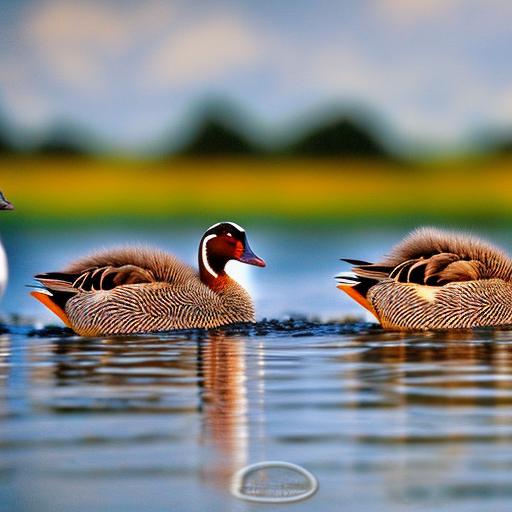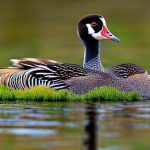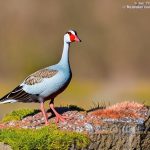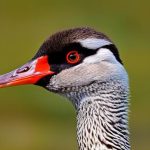Geese are fascinating creatures that come in a variety of breeds, each with its own unique characteristics and uses. Understanding the different breeds of geese is important for anyone interested in raising these birds, whether for meat, eggs, or as pets. By knowing the specific traits and requirements of each breed, you can make informed decisions about which geese are best suited to your needs and goals.
Key Takeaways
- Geese breeds can be categorized into domestic, wild, rare, ornamental, meat, egg-laying, dual-purpose, conservation, and pet breeds.
- Domestic geese breeds are popular for their meat, eggs, and feathers, and include popular breeds like Toulouse and Embden.
- Wild geese breeds are found in various parts of the world and include species like Canada geese and snow geese.
- Rare geese breeds are lesser-known varieties that are often bred for their unique characteristics, such as the African goose and the Sebastopol goose.
- Ornamental geese breeds are popular for their beauty and include breeds like the Chinese goose and the Pilgrim goose.
Domestic Geese Breeds
There are several popular domestic breeds of geese, each with its own distinct characteristics and uses. The Toulouse breed is one of the most well-known domestic breeds, known for its large size and calm temperament. Toulouse geese are primarily raised for meat production but can also be kept as pets or for exhibition purposes.
Another popular domestic breed is the Embden goose, which is prized for its white feathers and large size. Embden geese are often raised for meat production but can also be used as guard animals due to their loud honking and territorial nature.
The Chinese goose is another domestic breed that is highly valued for its egg-laying abilities. These geese are known for their small size, graceful appearance, and high egg production. Chinese geese are often kept by small-scale farmers or backyard enthusiasts who want a reliable source of fresh eggs.
When raising domestic geese, it is important to provide them with a suitable environment that includes access to water for swimming and grazing areas for foraging. Geese are social animals and thrive in groups, so it is recommended to keep at least two or more geese together.
Wild Geese Breeds
In addition to domestic breeds, there are also several species of wild geese that can be found in various parts of the world. Some common wild goose breeds include the Canada goose, the Greylag goose, and the Snow goose.
Canada geese are native to North America and are known for their distinctive honking call and V-shaped flight pattern. These geese are highly adaptable and can be found in a variety of habitats, including urban areas, farmland, and wetlands.
Greylag geese are native to Europe and Asia and are the ancestors of many domestic goose breeds. These geese are known for their distinctive grey plumage and loud honking calls. Greylag geese are migratory birds and can be found in a variety of habitats, including wetlands, grasslands, and agricultural fields.
Snow geese are native to North America and are known for their striking white plumage. These geese breed in the Arctic tundra and migrate south to warmer areas during the winter months. Snow geese are highly social birds and can often be seen in large flocks, especially during migration.
Rare Geese Breeds
While there are many popular breeds of geese, there are also several lesser-known breeds that are considered rare or endangered. These breeds often have unique characteristics that set them apart from more common breeds.
One example of a rare goose breed is the Pilgrim goose, which is known for its auto-sexing abilities. This means that male and female Pilgrim geese can be easily distinguished by their feather coloration at a young age. This makes breeding and sexing these geese much easier compared to other breeds.
Another rare breed is the Sebastopol goose, which is known for its curly feathers. These geese have long, flowing feathers that give them a unique appearance. Sebastopol geese are primarily kept for exhibition purposes but can also be raised for meat or as pets.
Preserving rare goose breeds is important for maintaining genetic diversity within the species and preventing the loss of unique traits. By supporting conservation efforts and choosing to raise rare breeds, you can help ensure the survival of these unique geese for future generations.
Ornamental Geese Breeds
Ornamental geese breeds are known for their striking appearance and are often kept for their beauty rather than for meat or egg production. These breeds can add a touch of elegance and charm to any flock.
One popular ornamental breed is the African goose, which is known for its tall stature and distinctive knob on its beak. African geese have a regal appearance and are often kept for exhibition purposes or as pets.
Another ornamental breed is the Pilgrim goose, which is known for its unique coloration. Pilgrim geese have a white body with grey or buff-colored feathers on their head and neck. These geese are often kept for their beauty but can also be used for meat or egg production.
When raising ornamental geese, it is important to provide them with a safe and secure environment, as they may be more susceptible to predators due to their size and appearance. Additionally, ornamental geese may require extra care and attention to maintain their beautiful plumage.
Meat Geese Breeds

If you are interested in raising geese for meat production, there are several breeds that are known for their high-quality meat and fast growth rates. These breeds are typically larger in size and have been selectively bred for their meat-producing abilities.
One popular meat breed is the Pekin goose, which is known for its tender and flavorful meat. Pekin geese have a plump body and white feathers, making them easy to clean and prepare for cooking. These geese are often raised on commercial farms but can also be raised on a smaller scale for personal consumption.
Another meat breed is the Emden goose, which is prized for its large size and fast growth rate. Emden geese have a plump body and white feathers, making them an ideal choice for meat production. These geese are often raised in free-range or pasture-based systems to ensure they have access to plenty of grass and forage.
When selecting a meat breed, it is important to consider factors such as growth rate, feed efficiency, and meat quality. By choosing a breed that is well-suited to your specific needs and production system, you can ensure a successful and profitable meat production operation.
Egg-Laying Geese Breeds
If you are interested in raising geese for egg production, there are several breeds that are known for their high egg-laying abilities. These breeds are typically smaller in size and have been selectively bred for their egg-producing abilities.
One popular egg-laying breed is the Chinese goose, which is known for its high egg production and reliable laying habits. Chinese geese can lay up to 60-100 eggs per year, making them an excellent choice for those looking to have a steady supply of fresh eggs.
Another egg-laying breed is the African goose, which is known for its large-sized eggs. African geese can lay up to 40-60 eggs per year, depending on their individual genetics and environmental conditions. These geese are often kept by small-scale farmers or backyard enthusiasts who want a reliable source of fresh eggs.
When raising egg-laying geese, it is important to provide them with a suitable nesting area and plenty of calcium-rich feed to support egg production. Additionally, regular collection of eggs is important to prevent them from becoming dirty or damaged.
Dual-Purpose Geese Breeds
If you are looking for geese that can provide both meat and eggs, there are several dual-purpose breeds that can meet your needs. These breeds are typically larger in size and have been selectively bred for both meat and egg production.
One popular dual-purpose breed is the Embden goose, which is known for its large size and good meat quality. Embden geese can also lay a moderate number of eggs per year, making them a versatile choice for those looking to have both meat and eggs from their flock.
Another dual-purpose breed is the Pilgrim goose, which is known for its auto-sexing abilities and good meat quality. Pilgrim geese can lay a moderate number of eggs per year and also produce flavorful meat, making them a popular choice for small-scale farmers or homesteaders.
When raising dual-purpose geese, it is important to provide them with a balanced diet that meets their nutritional needs for both meat and egg production. Additionally, regular monitoring of body condition and egg production can help ensure that your geese are healthy and productive.
Geese Breeds for Conservation
There are several geese breeds that are considered rare or endangered and are in need of conservation efforts to ensure their survival. These breeds often have unique characteristics or historical significance that make them valuable to preserve.
One example of an endangered goose breed is the Steinbach goose, which is native to Germany. Steinbach geese are known for their distinctive appearance, with a black body and white head. These geese are highly valued for their meat and are considered a cultural icon in their native region.
Another endangered breed is the Cotton Patch goose, which is native to the southern United States. Cotton Patch geese are known for their ability to thrive in hot and humid climates and are highly valued for their meat. These geese are considered a heritage breed and are in need of conservation efforts to prevent their extinction.
If you are interested in getting involved in conservation efforts for geese breeds, there are several organizations and programs that focus on preserving rare and endangered breeds. By supporting these efforts through donations, volunteering, or participating in breeding programs, you can help ensure the survival of these unique geese for future generations.
Geese Breeds for Pets
Geese can also make wonderful pets and companions, especially for those who have the space and resources to provide them with a suitable environment. There are several geese breeds that are known for their friendly and docile nature, making them well-suited for pet ownership.
One popular breed for pets is the Sebastopol goose, which is known for its gentle and friendly disposition. Sebastopol geese are often kept as pets or for exhibition purposes due to their unique curly feathers and calm temperament.
Another breed that is well-suited for pets is the Pilgrim goose, which is known for its friendly and sociable nature. Pilgrim geese are often kept as pets or for exhibition purposes due to their unique auto-sexing abilities and docile temperament.
When choosing a pet goose, it is important to consider factors such as space requirements, noise levels, and the availability of suitable grazing areas. Additionally, providing your pet goose with plenty of social interaction and mental stimulation is important to ensure their overall well-being.
Geese come in a wide variety of breeds, each with its own unique characteristics and uses. Whether you are interested in raising geese for meat, eggs, or as pets, understanding the different breeds is important for making informed decisions about which geese are best suited to your needs and goals.
By exploring the various breeds of geese and learning about their specific traits and requirements, you can ensure a successful and enjoyable experience with these fascinating birds. Whether you choose a domestic breed, a wild breed, a rare breed, an ornamental breed, a meat breed, an egg-laying breed, a dual-purpose breed, or a breed for conservation or as a pet, there is a goose breed out there that is perfect for you. So go ahead and dive into the world of geese breeds – you won’t be disappointed!
If you’re interested in learning more about different geese breeds, you might also find this article on the Poultry Wizard website intriguing. It provides valuable insights into the various geese breeds and their characteristics. From the majestic Toulouse to the elegant Embden, each breed has its own unique traits and qualities. Discover more about these fascinating birds by clicking on this link.
FAQs
What are the different breeds of geese?
There are many different breeds of geese, including Toulouse, Embden, African, Chinese, and Canada geese.
What is the difference between Toulouse and Embden geese?
Toulouse geese are larger and have a more rounded body shape, while Embden geese are slightly smaller and have a more streamlined body shape. Toulouse geese also have a more prominent dewlap (the loose skin under their chin) than Embden geese.
What is the origin of African geese?
African geese are believed to have originated in China, but were brought to Europe by Dutch traders in the 16th century. They were then brought to North America in the 19th century.
What is the distinguishing feature of Chinese geese?
Chinese geese are known for their distinctive knob on their beak, which is more prominent in males than females. They also have a slender, upright body shape.
Are Canada geese native to Canada?
No, Canada geese are actually native to North America, including Canada, the United States, and Mexico. They are also found in other parts of the world, including Europe and Asia, due to human introduction.
Meet Walter, the feathered-friend fanatic of Florida! Nestled in the sunshine state, Walter struts through life with his feathered companions, clucking his way to happiness. With a coop that’s fancier than a five-star hotel, he’s the Don Juan of the chicken world. When he’s not teaching his hens to do the cha-cha, you’ll find him in a heated debate with his prized rooster, Sir Clucks-a-Lot. Walter’s poultry passion is no yolk; he’s the sunny-side-up guy you never knew you needed in your flock of friends!







